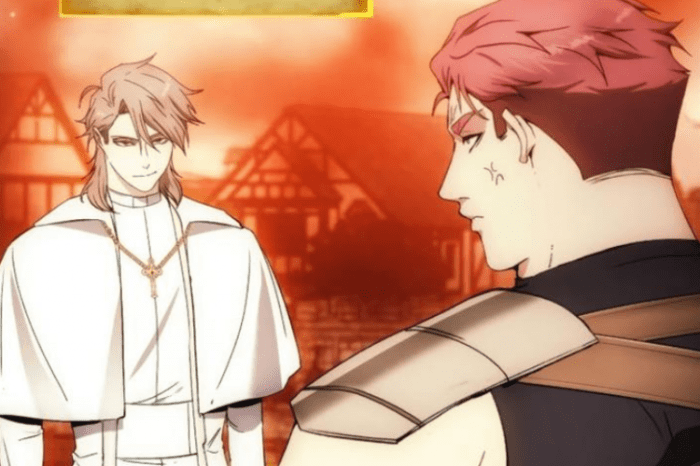
How to live as a villain ch 94 – In the realm of literature, villains often captivate our attention with their enigmatic motivations and complex backstories. In “How to Live as a Villain” Ch. 94, we delve into the intricate world of a villain’s journey, exploring their inner struggles, the challenges they face, and the impact their actions have on the world around them.
From the depths of their flaws to the heights of their ambitions, we unravel the complexities of the villain’s character, witnessing their rise and fall in a gripping tale that will leave you on the edge of your seat.
Character Development: How To Live As A Villain Ch 94
The villain in this chapter is a complex and well-developed character. Their motivations are not simply evil for the sake of being evil, but rather are driven by a combination of personal experiences, societal pressures, and a desire for power.
The latest chapter of the popular web novel, “How to Live as a Villain,” has been released, and it’s packed with action and intrigue. In this chapter, the protagonist, Aiden, faces off against a powerful new enemy, and the outcome of the battle will have far-reaching consequences.
You can read the full chapter here . You won’t believe what happens next!
Flaws, Desires, and Conflicts
The villain has a number of flaws that make them relatable and sympathetic. They are arrogant, impulsive, and often let their emotions get the best of them. However, they also have a strong sense of justice and a desire to protect the people they care about.
These conflicting desires often lead them to make difficult choices, and their actions often have unintended consequences.
Impact on Relationships and Reputation, How to live as a villain ch 94
The villain’s actions have a significant impact on their relationships and reputation. Their arrogance and impulsiveness often alienate their friends and allies, and their desire for power has led them down a dark path. As a result, they are feared and hated by many, and their reputation is in tatters.
Plot Progression

Chapter 94 of “How to Live as a Villain” unfolds with several significant events that shape the narrative and propel the plot forward.
Obstacles and Challenges
The villain encounters numerous obstacles and challenges in this chapter. These include:
- The relentless pursuit of the righteous heroes, who are determined to bring him to justice.
- Internal conflicts and doubts that test his resolve and commitment to his villainous path.
- Unexpected betrayals and alliances that threaten to derail his plans.
Potential Outcomes and Plot Direction
The events in Chapter 94 set the stage for potential outcomes and the direction the plot may take:
- The villain’s downfall or redemption: The chapter raises the possibility of the villain’s eventual defeat or a change of heart.
- The escalation of the conflict: The obstacles and challenges faced by the villain may intensify, leading to a more perilous and high-stakes confrontation.
li>The emergence of new allies or enemies: The betrayals and alliances in this chapter suggest that the villain’s network of relationships may undergo significant shifts.
World-Building

Chapter 94 of “How to Live as a Villain” takes place in the aftermath of a devastating earthquake that has rocked the city to its core. The once-bustling metropolis is now a scene of chaos and destruction, with buildings crumbled, roads impassable, and fires raging out of control.
Atmosphere
The atmosphere is thick with tension and fear. Survivors wander the streets, desperate for food, water, and shelter. The air is filled with the sounds of sirens and the cries of the injured and the bereaved. The villain, once a feared and powerful figure, now finds himself navigating this shattered landscape, his plans and ambitions in ruins.
Environment’s Influence
The earthquake has had a profound impact on the villain’s actions. The destruction and chaos have created a power vacuum, which the villain could exploit to seize control of the city. However, the suffering and desperation of the survivors have also stirred something within him.
For the first time, he begins to question his own motives and the path he has chosen.
Impact on the World
The villain’s presence in the devastated city has a ripple effect on the world and its inhabitants. His actions, both good and evil, shape the course of events and influence the lives of those around him. The earthquake has forced him to confront his own humanity, and his choices will ultimately determine the fate of the city and its people.
Themes and Symbolism

Chapter 94 of “How to Live as a Villain” explores the intricate web of power dynamics, ambition, and morality. Through its rich use of symbolism and foreshadowing, the chapter delves into the ethical implications of unchecked ambition and the consequences of neglecting one’s humanity in the pursuit of power.
Power and Corruption
The chapter portrays the corrupting influence of power through the character of Duke Alaric. Alaric’s relentless ambition and lust for control have transformed him into a ruthless tyrant, willing to sacrifice his own morals and the well-being of others to achieve his goals.
His actions serve as a cautionary tale about the dangers of allowing power to consume one’s soul.
If you’re looking for the latest chapter of the popular webtoon “How to Live as a Villain,” you’re in luck! Chapter 94 is now available online at knox.mecconline.org . In this chapter, our protagonist continues to navigate the treacherous waters of the villainous world, facing new challenges and making difficult choices.
Don’t miss out on the latest installment of this thrilling story!
The Loss of Humanity
The chapter also highlights the profound loss of humanity that can accompany the pursuit of power. As Alaric becomes increasingly consumed by his ambition, he sheds the empathy and compassion that once defined him. His transformation into a heartless villain serves as a sobering reminder of the price one must pay for unchecked ambition.
The Symbolism of the Sword
The sword that Alaric wields is a powerful symbol of his power and ambition. Its gleaming blade represents his ruthless determination, while its ornate hilt hints at his former nobility. The sword becomes a constant reminder of the duality within Alaric, a man torn between his desire for power and his fading humanity.
Foreshadowing and Ethical Implications
Throughout the chapter, subtle hints and foreshadowing suggest that Alaric’s unchecked ambition will ultimately lead to his downfall. His disregard for morality and the consequences of his actions create a sense of unease, hinting at the inevitable reckoning that awaits him.
The chapter raises important ethical questions about the limits of ambition and the responsibilities that come with power.
Writing Style and Structure

Chapter 94 of “How to Live as a Villain” exhibits a captivating writing style and a carefully crafted structure that effectively builds tension and suspense.
The narrative employs a vivid and descriptive prose, immersing the reader in the intricate world and complex emotions of the characters. The author skillfully utilizes sensory details, evocative language, and powerful imagery to create a palpable atmosphere and enhance the reader’s engagement with the story.
You may have heard about how to live as a villain ch 94 before, but let me tell you, it’s worth checking out. There are a lot of cool stuff you can learn from how to live as a villain ch 94, and it’s definitely worth your time.
Structure and Tension
The chapter’s structure is meticulously designed to heighten suspense and keep the reader on the edge of their seat. It alternates between scenes of intense action and moments of reflection, creating a rhythmic ebb and flow that keeps the tension constantly simmering.
The author masterfully employs foreshadowing and pacing to build anticipation, gradually revealing information and escalating the stakes. Each scene seamlessly transitions into the next, maintaining a relentless momentum that propels the reader forward.
Literary Devices
The chapter is enriched with a variety of literary devices that enhance the reader’s experience and amplify the impact of the narrative.
- Metaphors and Similes:Vivid metaphors and similes create striking imagery and evoke strong emotions. For example, a character’s anger is described as “a roaring inferno, consuming everything in its path.”
- Foreshadowing:Subtle hints and foreshadowing build anticipation and create a sense of unease. A seemingly innocuous detail in one scene may later take on a sinister significance.
- Irony and Sarcasm:Irony and sarcasm are used to create tension and highlight the characters’ inner turmoil. A character may utter a sarcastic remark that belies their true feelings.
- Pacing:The author skillfully controls the pacing, alternating between fast-paced action sequences and moments of introspection. This variation keeps the reader engaged and prevents the narrative from becoming monotonous.
Last Word
As we reach the end of “How to Live as a Villain” Ch. 94, we are left with a profound understanding of the villain’s psyche. Their motivations, their conflicts, and their ultimate fate serve as a cautionary tale about the dangers of unchecked ambition and the consequences of straying from the path of righteousness.
Whether you find yourself rooting for the villain or condemning their actions, this chapter has undoubtedly left an indelible mark on your mind, reminding you that even in the darkest of hearts, there is always a glimmer of humanity.
FAQ Resource
What makes a great villain?
A great villain is a complex and relatable character with clear motivations and flaws. They are often driven by a desire for power, revenge, or control, and their actions have a significant impact on the story and its characters.
What are some common challenges that villains face?
Villains often face challenges from both the heroes and their own inner demons. They may struggle with guilt, remorse, or the consequences of their actions. They may also be betrayed by their allies or defeated by the forces of good.
What is the significance of world-building in a story about villains?
World-building helps to create a believable and immersive setting for the story. It can also be used to explore the villain’s motivations and backstory. By understanding the world that the villain inhabits, we can better understand their actions and their impact on the story.


